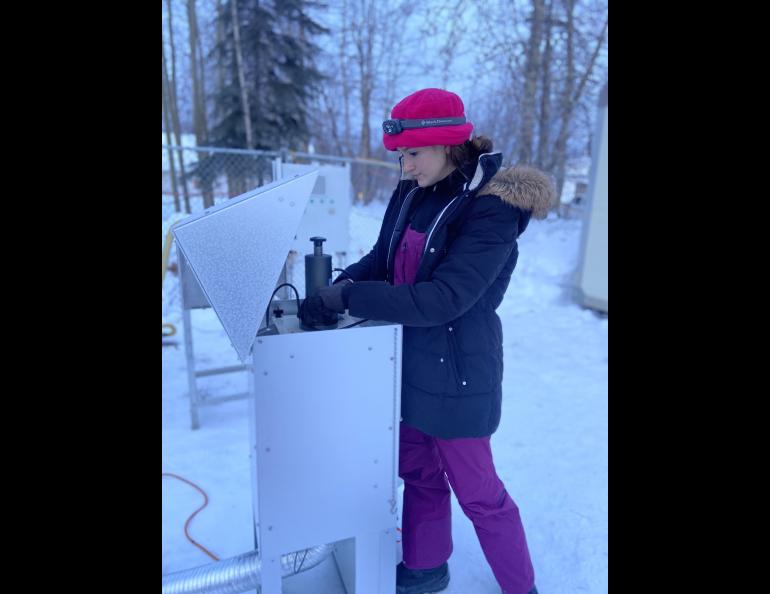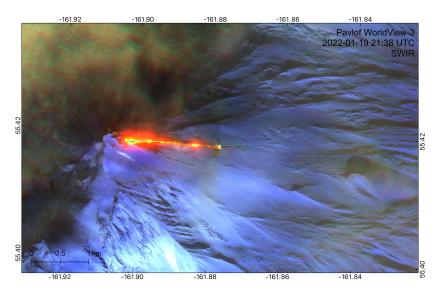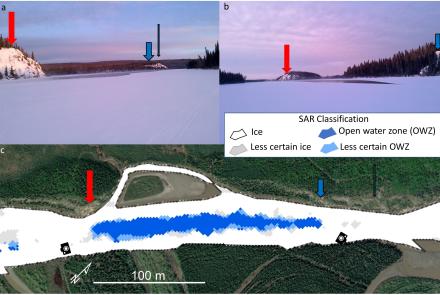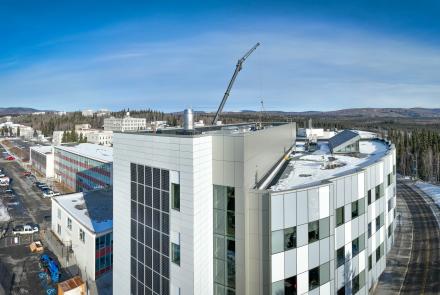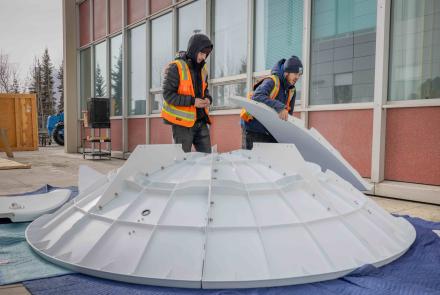Use of residential heating fuel is the main contributor of primary sulfate pollution in Fairbanks’ wintertime air, according to research conducted during an international science program in the community in 2022.
Authors of a recent research paper write that the finding, along with other program outcomes, will help air quality managers decide what improvement methods to use. The information may also benefit other high-latitude urban areas during winter.
University of Alaska Fairbanks professor William Simpson, an atmospheric/environmental chemist and co-author of the paper, said the research foretells that a reduction in airborne primary sulfate likely is coming.
“The finding that most particulate sulfate is directly emitted is good news because primary sulfate should decrease along with fuel oil sulfur reductions that began in September 2022,” he said.
Prior studies have identified residential fuel oil as the main source of sulfate particles in Fairbanks air but did not specify whether it occurred by direct emission from residential heating, called primary sulfate, or by post-exhaust atmospheric chemical reactions, called secondary sulfate.
The new research also found that most primary sulfate particles are of less than 0.7 micron in diameter. One micron is one one-thousandth of a millimeter. One millimeter is the thickness of 10 sheets of standard copier paper.
Particles of 2.5 microns or less, known as PM2.5, have been shown to cause respiratory illnesses and heart ailments in residents of cold-weather communities with poor air dispersion. Particles of less than 0.7 micron pose a greater risk to human health, as they can penetrate deeper into the body.
Authors of the paper, published in November in the journal ACS Environmental Science & Technology Air, write that primary sulfate contributed 50% to 74% of the total sulfate in Fairbanks winter air on average during the 2022 research campaign. Secondary sulfate accounted for the remainder.
The paper’s 23 co-authors include three from the University of Alaska Fairbanks: Simpson and associate professor Jingqiu Mao, also an atmospheric/environmental chemist; and atmospheric sciences graduate student Meeta Cesler-Maloney. Simpson and Mao are affiliated with the UAF Geophysical Institute and the UAF College of Natural Science and Mathematics.
“The biggest finding is that primary sulfate accounts for the majority of sulfate, especially since it is so abundant in the smallest size category,” said Allison Moon, the paper’s lead author and a graduate student studying atmospheric science at the University of Washington. “This was unexpected. Some studies assume primary sulfate is negligible compared to secondary sulfate formed in the atmosphere after emission.”
The research is one component of the 2022 Alaskan Layered Pollution and Chemical Analysis project, or ALPACA.
The U.S. Environmental Protection Agency has put Fairbanks in its “serious” category for persistently violating Clean Air Act standards for PM2.5 levels and has threatened sanctions. The community for years has tried a variety of methods to improve air quality in the portion of the Fairbanks North Star Borough failing to meet air quality standards.
Moon’s research found that sulfate — primary and secondary — is also the second-largest contributor of PM2.5 in Fairbanks, accounting for 15% to 33% of the total, the research paper states. It is second only to wood smoke from space heating.
Although wood smoke from space heating is the largest contributor of PM2.5, that smoke is only a minor provider of atmospheric sulfate. Wood burning produces sulfur dioxide, the precursor to sulfate created through atmospheric processes, equal to just 4% of the sulfur dioxide produced by the burning of fuel oil for space heating, according to Moon’s paper.
Moon and colleagues analyzed sulfate particles from Jan. 18, 2022, through Feb. 25, 2022, sorting the primary and secondary sulfate data into three bins according to particulate size. The team collected filter samples in the Fairbanks area and collected samples for two weeks at the relatively clean site of Poker Flat Research Range northeast of Fairbanks for comparison.
A key question remains to be answered, however: Does a reduction in primary sulfate emissions cause a reduction in secondary sulfate?
Moon notes in the research paper that the switch to ultra low-sulfur heating fuel would likely reduce emissions of primary sulfate and sulfur dioxide but that additional research is needed to understand how the change would affect secondary sulfate formation and air quality overall.
Moon added, however, that ultra low-sulfur heating fuel is more expensive and it “is important to acknowledge the economic impacts of increased fuel oil costs, since this financial burden may motivate residents to rely more heavily on woodburning and worsen air quality overall.”
Moon’s research also affirmed prior work by the Alaska Department of Environmental Conservation that sulfate derived from the burning of coal was not a major contributor to air pollution in the Fairbanks violation area.
The research paper notes that Fairbanks-area power plants burn low-sulfur coal and that their smokestacks often emit above the shallow inversion layer.
The ALPACA project seeks to improve understanding of how pollution behaves in cold and dark conditions and how the layered atmosphere affects pollution events. Nearly 50 scientists from the U.S. and Europe spent seven weeks in Fairbanks in early 2022 to study the community’s wintertime air quality.

